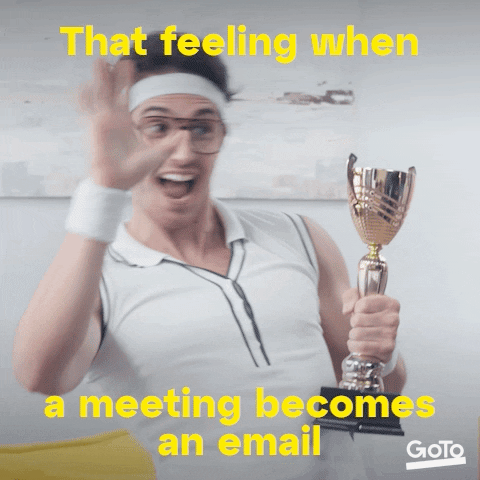Machine Translation Has Evolved From “Good Enough” to Strategic. In 2025, companies combine neural engines and LLMs to translate at scale, maintain terminological consistency, and accelerate time-to-market. This ranking prioritizes quality, integrations, security, and scalability.
What Is AI-Powered Machine Translation?
AI-based machine translation uses neural networks and natural language processing (NLP) to convert text (or speech) from one language to another while preserving meaning and tone.
Unlike classical statistical methods, neural models learn contextual patterns and semantic disambiguation, resulting in more natural outputs. Essentially: text goes in, the model maps it into a semantic space, and outputs an equivalent in the target language.
How Neural Engines and LLMs Work
-
Input: The text is tokenized (split into units).
-
Encoding: A network (e.g., Transformer) maps the text into vector representations capturing context.
-
Decoding: The model generates the target language sequence, word by word, optimizing for coherence and fluency.
-
Post-processing: Normalization, style rules, glossaries, and translation memories ensure consistency.
LLMs (large language models) enhance this with reasoning, instructions, and dynamic terminology—useful for marketing, support, and documentation.
Benefits of Using an AI Translator in Your Business
-
Speed: Instantly translates content, even at scale.
-
Scalability: Handles volume spikes without increasing headcount.
-
Consistency: Maintains glossaries and a uniform brand voice.
-
Cost: Significantly reduces expenses compared to 100% human translation (without replacing critical reviews).
Criteria for Evaluating an AI Translator
Accuracy and Fluency
Look for natural, context-aware outputs. Evaluate with real samples, check for false friends, agreement, and brand terminology handling.
Language Coverage
Prioritize tools with broad catalogs (including less common languages) if targeting multiple markets.
Integrations and API
Compatibility with CMS, CRM, support platforms, and localization pipelines (CI/CD, Git, TMS) is essential.
Security and Privacy
Demand encryption in transit and at rest, data residency, RBAC controls, GDPR/CCPA compliance, and on-prem/private deployment options.
Cost and Scalability
Compare pay-as-you-go, per-user plans, or Enterprise pricing. Calculate TCO (translations, review, maintenance, support).
Ranking: The 15 Best AI Translation Tools
Ranked by balance between accuracy, enterprise-readiness, security, and integrations. Strengths, ideal use cases, and limitations included.
X-doc AI
- Strengths: Technical accuracy (legal, medical, industrial), security controls, private deployments.
- Ideal for: Regulated documentation, critical terminology.
- Limitations: Steeper setup curve.
DeepL
-
Strengths: Outstanding neural quality, glossaries, natural style in EU pairs.
-
Ideal for: Marketing, product, editorial content.
-
Limitations: Fewer languages than cloud giants.
Google Translate
-
Strengths: Massive language coverage, text/voice/image support, user-friendly.
-
Ideal for: High-volume support, general content.
-
Limitations: Sensitive content requires careful setup; API is paid (consumer app ≠ API).
Microsoft Translator
-
Strengths: Native Microsoft 365 integration, collaboration, live subtitles.
-
Ideal for: Businesses in the Microsoft ecosystem.
-
Limitations: Fine-tuning terminology requires extra work.
Yandex Translate
-
Strengths: Excellent with Slavic languages and regional ecosystem.
-
Ideal for: Eastern Europe and adjacent markets.
-
Limitations: Compliance and data residency vary by jurisdiction.
Amazon Translate
-
Strengths: Cloud API, scalable, customizable with Custom Terminology.
-
Ideal for: Backend, apps, serverless pipelines.
-
Limitations: Post-editing needed for premium marketing.
SeamlessM4T
-
Strengths: Multimodal (voice↔text↔voice), noise-robust.
-
Ideal for: Contact centers, e-learning, field ops.
-
Limitations: Enterprise adoption still evolving (models/infrastructure).
Lufe AI
-
Strengths: Versatile formats (web, PDF, images), intuitive interface.
-
Ideal for: Content teams translating varied assets.
-
Limitations: Glossary fine-tuning less advanced than pure TMSs.
Smartling
-
Strengths: Full TMS, workflow automation, QA, glossaries, and memories.
-
Ideal for: Large-scale localization with multiple stakeholders.
-
Limitations: Higher investment and onboarding time.
LILT
-
Strengths: Human-in-the-loop translation, engine learns in real time.
-
Ideal for: Critical content where brand voice is key.
-
Limitations: Requires a linguist team involvement.
Systran
-
Strengths: Longstanding in professional translation and complex docs; on-prem options.
-
Ideal for: Government, defense, sensitive industries.
-
Limitations: Less “modern” UX than SaaS marketing tools.
Frase
-
Strengths: SEO + content focus; research, briefing, and translation with search intent.
-
Ideal for: Multilingual organic marketing.
-
Limitations: Not a full TMS; needs strong editorial pipeline.
Lokalise
-
Strengths: Software localization (strings, keys), CI/CD automation.
-
Ideal for: Product teams and mobile apps.
-
Limitations: Not a substitute for full editorial translation.
Trancy
-
Strengths: Bilingual reading, flashcards, learning aids.
-
Ideal for: Education, self-learning.
-
Limitations: Not an enterprise-grade localization solution.
Immersive Translate
-
Strengths: Immersive web reading experience, contextual customization.
-
Ideal for: Research, article reading, browsing.
-
Limitations: Limited enterprise governance and QA.
Quick Comparison: Pricing, Languages, and Accuracy
| Tool | Base Price | Supported Languages | Main Use Cases |
|---|---|---|---|
| X-doc AI | Enterprise/private | 50+ (technical focus) | Regulated docs, legal/medical |
| DeepL | Freemium / Pro | 30+ | Marketing, web, product |
| Google Translate | Free app / Paid API | 130+ | Support, general content, multimodal |
| Microsoft Translator | Freemium | 100+ | Office, meetings, subtitles |
| Yandex Translate | Freemium | 90+ | Eastern Europe, Slavic languages |
| Amazon Translate | Pay-as-you-go | 75+ | Backend, apps, pipelines |
| SeamlessM4T | Variable (model) | 90+ voice/text | Voice↔voice, call centers |
| Lufe AI | Freemium | 25+ | PDFs, images, web |
| Smartling | Enterprise | 100+ (via engines) | TMS, workflows, QA |
| LILT | Per seat | 50+ | Human-AI, brand voice |
| Systran | Enterprise/on-prem | 55+ | Government, defense |
| Frase | Subscription | 20+ (via engines) | Multilingual SEO |
| Lokalise | Subscription | 50+ (via engines) | Software, mobile apps |
| Trancy | Freemium | 20+ | Education |
| Immersive Translate | Freemium | 20+ | Web reading |
Indicative reference only: always check provider-specific limits, add-ons, and SLAs for your use case.
How to Choose the Right AI Translator for Your Use Case
Multilingual Ecommerce
-
DeepL / Smartling / Amazon Translate: large catalogs, glossaries, CMS automation.
Omnichannel Customer Support
-
Microsoft Translator / Google Translate / SeamlessM4T: chat, email, and real-time voice.
Global Marketing & SEO
-
DeepL / Frase / LILT: natural tone, search intent, consistent brand voice.
Technical Documentation
-
X-doc AI / Systran / Smartling: terminological precision, QA, compliance.
Education and e-Learning
-
SeamlessM4T / Trancy / Immersive Translate: subtitles, bilingual reading, immersive experiences.
Limitations and Risks of AI Translation
Context and Ambiguity
Idioms, humor, and cultural references may fail. Use human post-editing for critical pieces.
Bias and Cultural Nuance
Check for bias and adapt style guides per market. Implement localized glossaries.
Sensitive Data and Compliance
Avoid sending PII without anonymization. Require data residency and traceability.
Trends Redefining AI Translation
Multimodal Translation:
Text, voice, image, and video on a single platform with time sync.
Industry-Specific Customization:
Fine-tuned models and live glossaries for legal, healthcare, technical fields.
Human-AI Collaboration:
Hybrid flows with human-in-the-loop for editorial quality and continuous QA.
FAQs About AI Translation Tools
How do you train an AI translator with brand glossaries?
Most enterprise tools allow glossaries and translation memories. Platforms like DeepL and Smartling let you upload terminology and style guides to ensure consistency.
What’s the real accuracy for Spanish-English AI translation?
Accuracy is high due to abundant data. Still, technical or creative texts require human post-editing to preserve terminology and nuance.
Are there free AI translators with API access?
Consumer apps may be free, but enterprise APIs are usually paid (e.g., Google/Microsoft with limited free tiers or trials). For heavy use, a paid plan is better for limits and SLAs.
When should you choose human over AI for final review?
Always for critical content (legal, brand campaigns, sensitive communications) or when cultural adaptation is needed. The AI + human editor combo maximizes quality and minimizes risk.
.png)




















